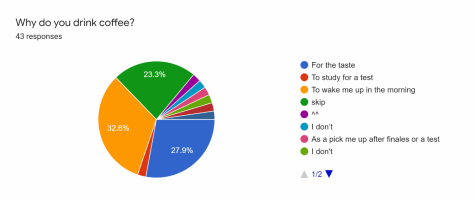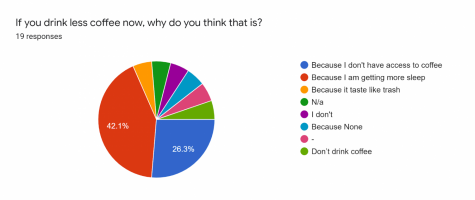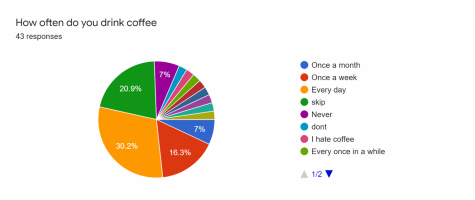Café Ramaz: Coffee Rundown
The coffee industry is estimated to be worth $20 billion and about 500 billion cups of coffee are consumed annually. Millions of people around the world rely on coffee to get through the day, and Ramaz is no exception. Some students drink coffee regularly, or at least once in a while, despite the presence of long-term effects of caffeine consumption for teenagers. With the new reality of Zoom school, how is that changing the amount of coffee students that drink?
Caffeine is a drug that works by blocking different adenosine receptors in the brain. The main receptor caffeine blocks is the A1 receptor which, when active, is responsible for sleepiness. That is why drinking coffee or any caffeinated drink spurs feelings of alertness. Although these effects may se
em beneficial, these are just short term results which can cause long term consequences. Some of the unwanted side effects may include insomnia, restlessness, nervousness, gastrointestinal disturbances, and muscle twitching. For teens, it is especially dangerous to consume caffeine because it has the ability to stunt children’s development by interfering with important conne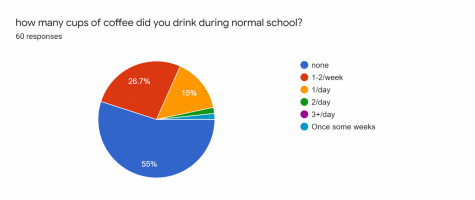 ctions in the brain.
ctions in the brain.
According to a study in Nutrition Research, every 10 mg of caffeine consumed by a 13-year-old boy increases his chance of getting fewer than 8.5 hours of sleep by 10 percent. This can lead to sleep deprivation which can affect one’s mental and physical health. To put that into perspective, one 8-oz cup of coffee has 95-200 mg of caffeine and a cup of teahas about 26. The worst of all is that people who start to drink caffeinated
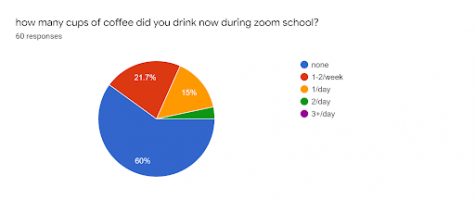
drinks earlier will build up their tolerance to caffeine earlier and will become dependent on consumption. Over time, the body starts to get used to higher and higher doses of caffeine and as a result, what started out to just a couple cups a week turns into a couple of cups a day just to have the same effect. For these people, if there is a sudden break in their consumption of caffeine they will experience caffeine withdrawal which leads to symptoms (headaches, fatigue, low energy, etc.) which can last for up to two months.
At Ramaz, it is common to see a fellow classmate walk into class with a good old cup o’ joe, but how many students actually drink this seemingly dangerous beverage? 59% of the respondents to a survey answered that they have a habit of drinking coffee, and 30% said that they drink coffee every day. When asked the reason for drinking coffee, 32% of students said that they drink coffee to ease staying awake in the morning, and 28% of students said that they drink coffee because they like the taste of it. In a poll comparing the consumption of coffee before versus after Zoom school, 55% of the 60 respondents said that they don’t drink coffee during normal school, 26.7% said that they had 1-2 cups a week, and 15% said that they have 1 per day. When asked how many cups of coffee they drink now during Zoom school, now 60% answered that they no longer drink coffee, 22% of people have 1-2 cups a week, but the amount of people who have one cup per day still stands at 15%. It appears as though the people who drink coffee daily have grown a dependency on caffeine and still need it even during quarantine. When asked how they get coffee during normal school, the results were split in half by people who buy it and people who make it at home. Moreover, the poll revealed that 42% of people who drink less coffee now do so because they are getting more sleep and 26% of people say that they no longer have access to coffee. Overall, this new quarantine lifestyle has limited access to caffeine and has given students enough time to sleep that they feel as though they no longer need this potentially threatening stimulant to get through the day.